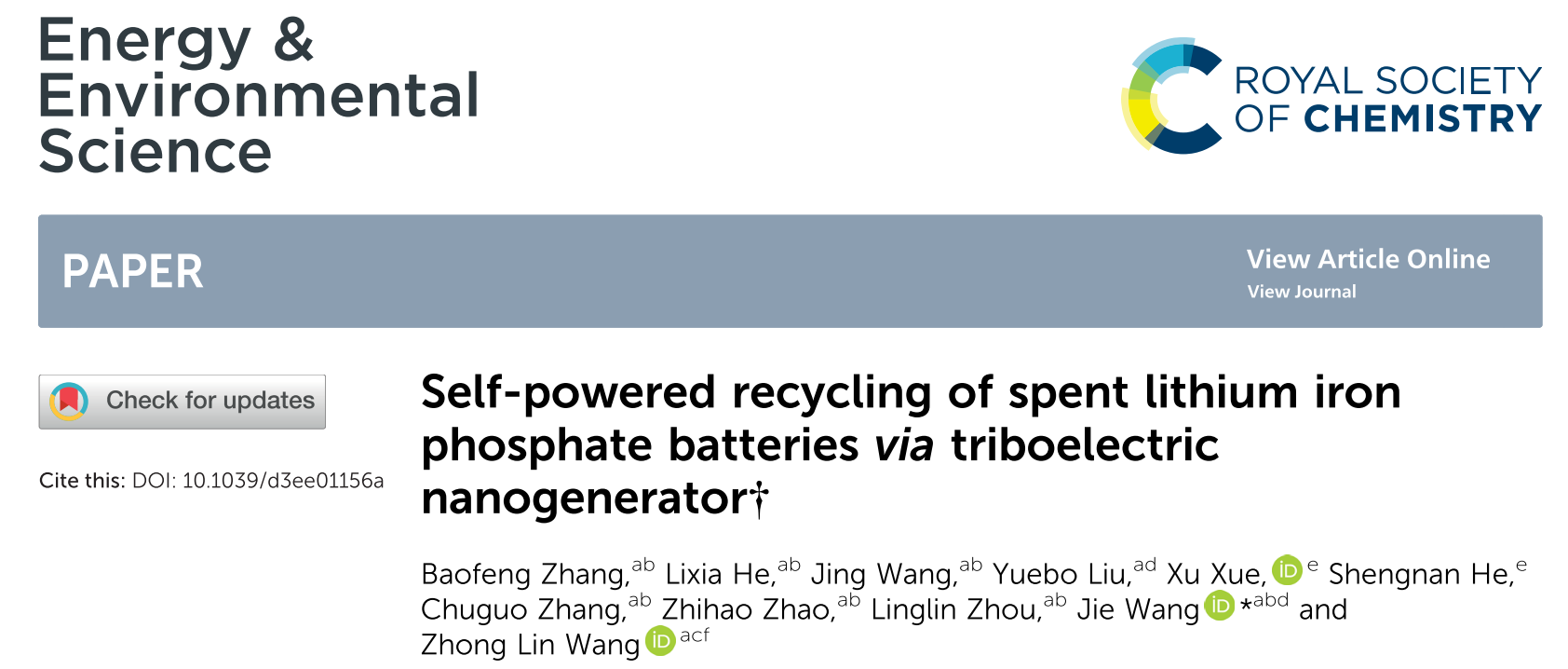An Efficient Green And Economical Method Released For Recycling LFP Batteries
| Jerry Huang

Editor's note: Lithium-ion batteries are now widely used in a variety of electronic devices, EV and grid-scale energy storage. Global demand for lithium-ion batteries continues to grow significantly. It is estimated that by 2030, the global volume of spent lithium-ion batteries will exceed 11 million tons, which will become a huge source of pollution that could seriously threaten the environment and public health. At the same time, the growing demand for lithium-ion batteries translates into a growing demand for lithium and cobalt. On the other hand, the content of lithium and cobalt in LIB cathodes is as high as 15% and 7% wt, respectively, which is much higher than that in ores and brines. Therefore, the recovery of metal elements in spent LIB cathodes is of great environmental, social and economic significance. Currently, the recovery of lithium-ion batteries is mainly divided into three steps: pretreatment, metal extraction and metal separation. In the research and development of the metal extraction step of the recycling process, the hydrometallurgical process is one of the most viable options because of its high metal leaching rate and satisfactory purity of the recovered products. However, the process is not so environment friendly, nor highly economical, because the use of inorganic acids brings hazardous by-products; while organic acids require additional reducing agents or longer reaction times and higher temperatures for metal recovery.
Researchers from Zhong Lin Wang team bring us a possible method that is green, highly efficient and economical for recycling LIBs, especially LFP batteries.
Abstract
The recycling of lithium iron phosphate batteries (LFPs), which represent more than 32% of the worldwide lithium-ion battery (LIB) market share, has raised attention owing to the valuable element resources and environmental concerns. However, state-of-the-art recycling technologies, which are typically based on electrochemical or chemical leaching methods, have critical issues such as tedious procedures, enormous chemical/electricity consumption and secondary pollution. Here, we report an innovative self-powered system composed of an electrochemical LIB recycling reactor and a triboelectric nanogenerator (TENG) for recycling spent LFP. In the electrochemical LIB recycling reactor, the Cl−/ClO− pair generated electrochemically in NaCl solution is adopted as the redox mediator to break down LFP into FePO4 and Li+via the redox targeting reaction without extra chemicals. Additionally, a TENG that utilizes discarded components from LIBs including casings, aluminum-plastic films and current collectors is designed to drastically minimize secondary pollutants. Furthermore, the TENG harvests wind energy, delivering an output of 0.21 W for powering the electrochemical recycling system and charging batteries. Therefore, the proposed system for recycling spent LFP exhibits high purity (Li2CO3, 99.70% and FePO4, 99.75%), self-powered features, simplified treatment procedure and a high profit, which can promote the sustainability of LIB technologies.
Reference
http://dx.doi.org/10.1039/D3EE01156A